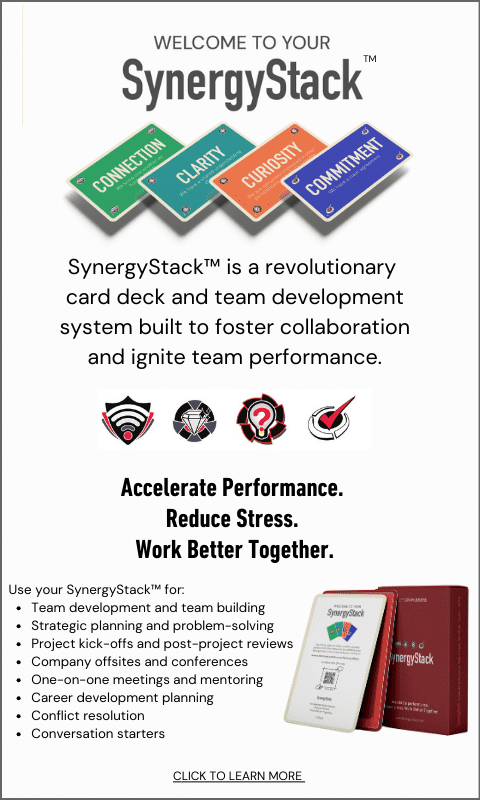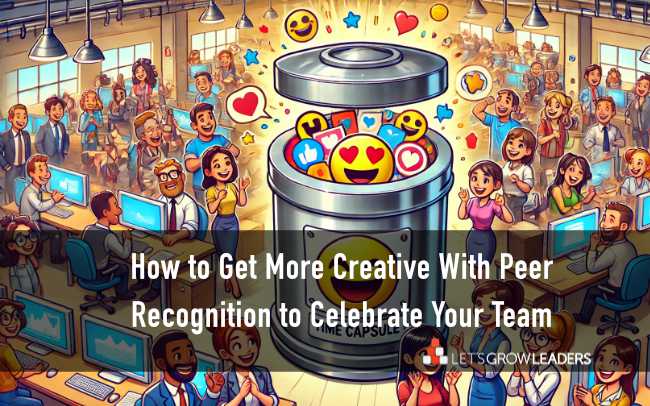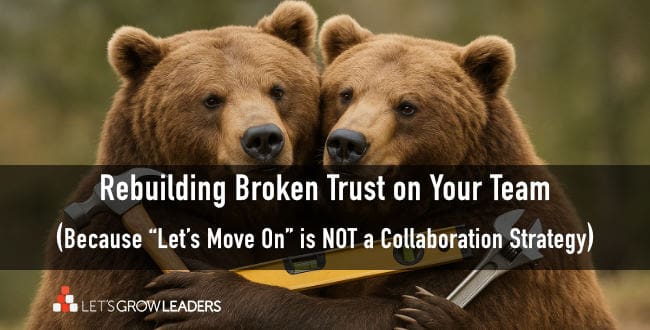Build a cadence of regular peer recognition for a stronger, happier, more connected team
As a human-centered leader, you know it’s important to recognize and celebrate your team. And, if you’re like most managers we talk with, you wish you could do more. You can multiply your efforts by building an infrastructure for effective peer recognition.
Why Peer Recognition is So Important
Let’s start with why peer recognition is so important.
1. You can catch more good as it’s happening.
You get more of what you encourage and celebrate and less of what you ignore. There’s likely a lot of good going on that you don’t see firsthand. The celebration will be more meaningful because it can be more specific and timely.
2. It creates a cycle of collaboration and celebration.
When people feel appreciated and valued, they’re more likely to go the extra mile to help their teammates. When you make it easy for team members to recognize that extra mile, you’ve created a virtuous cycle of collaboration and celebration.
3. Peer recognition builds good habits and grows leaders
And third, you’re growing leaders. When you set the expectation that appreciation is a team sport, you’re equipping your team with valuable habits they can transfer to future leadership roles.
Practical Ways to Help Your Team Recognize One Another
So let’s give you a few practical ways to get started.
Before we get too fancy, let’s start with the basics. First, meet with your team and ask for their help. You might say something like this:
“I am so proud of this team and all the important work each of you do. And, I recognize that there is a lot of good going on that you will see before I do. I’d like to ask for your help. I’d like each of you to be on the look out for ways to celebrate and appreciate one another. Here are a few ideas about how we can do this. I’d love to hear yours.”
Another easy way to do this is to start every meeting with a few minutes for team members to recognize one another. You can also teach your team how to give better peer recognition by focusing on specifics about what the person did and why it mattered.
For example, instead of “Joe really helped me out on X project.” Instead say, “Joe had a remarkable idea which helped me plan a more connected site visit with X client. As a result, they’re now interested in learning more about our new product line.”
With those foundations in place, let’s give you a few of our favorite, creative peer recognition ideas.
The Recognition Time Capsule
If you’ve read anything we’ve written on appreciation, you know we’re huge believers in timely feedback (see How to Make Frequent, Regular Recognition a Daily Habit.
Once you’re doing that, you can also add in a bit of long-term fun by creating a recognition time capsule. If your team(s) are working in the same location, you can turn a cardboard box into a time capsule (just ask one of your more creative team members to design it). If they are working remotely, you can create an email box or form to capture and collect peer recognition as the year goes on.
To make it easy, you can give a format on note cards, or in a form with simple prompts.
I’m celebrating _____.
For what they did ______.
And the difference it made _______.
Encourage your team to contribute peer recognition throughout the year, and then open the recognition time capsule once or twice a year for a low-cost, high-impact team celebration.
Values Awards
This is a recognition activity that I (David) used for years when I was an executive leading a non-profit organization.
I took our organization’s values and created a series of values-based awards with fun, low-cost “trophies.” For example, for the value of mutual support (without regard to hierarchy), the prize was a wire whisk spray-painted gold and mounted on a homemade plaque. The whisk represented how they really got in the mix.
In the first year, I designed the awards and decided who received them. The following years were all about peer recognition, with team members nominating their co-workers. People got very excited for the “big reveal” of who won. And the winners proudly displayed their trophies and enjoyed the handoff to the next award winner the following year.
The Best Thing I Missed
I (Karin) learned the importance of peer recognition as my team size grew. I had thousands of team members spread across multiple time zones. Each month, I invited submissions for “the best thing I missed.” We solicited great stories of customer or peer support, focused on the outcome, and the “how.”
Each month, the recognized employees were invited to a call with me (many of whom were direct reports, of direct reports, of direct reports), where I would share their stories of what they did and why it mattered. “I heard you did………. and wow…… this was so important because….”
Like David’s peer recognition system, the only real cost was time. The exposure mattered. It’s always good to feel seen.
Celebrating Strengths
Another easy and important peer recognition activity is to get people talking about strengths.
“I see your ability to (insert habit here) and this matters because…”
The focus here is on strengths, habits, and behaviors, that can translate across multiple situations.
Our SynergyStack™ cards are an easy way to facilitate this team recognition exercise.
Building a cadence of regular peer recognition is essential for creating a stronger, happier, and more connected team. By establishing a robust peer recognition system, you can capture more good as it happens, foster a cycle of collaboration and celebration, and cultivate leadership qualities within your team. Implementing practical strategies and creative ideas like recognition time capsules, values awards, and celebrating strengths will ensure that your team feels appreciated and motivated, leading to a more cohesive and productive work environment.







0 Comments